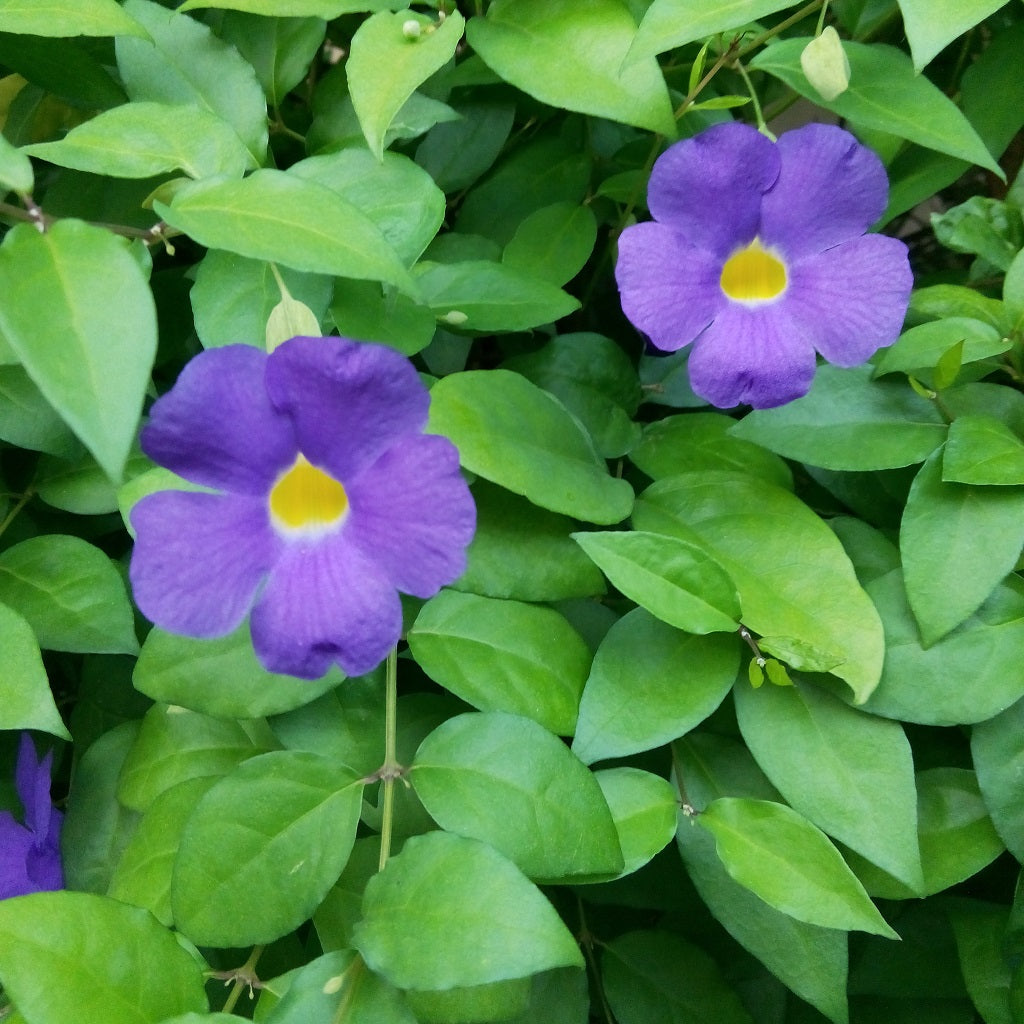Thunbergia erecta
Family
Acanthaceae
Origin
Tropical Africa
Description
Blue flowers resembling morning glory. Several of the best-known Thunbergia species are climbers, but this native of tropical Africa is a sprawling shrub, very useful in mixed beds or as a low hedge. It has attractive, small, dark green leaves and tubular flowers which in the most common form are rich purple with a yellow throat; there is also a white-flowering form, which seems to have smaller leaves and is somewhat less robust
The violet-blue, yellow-throated, tubular flowers attract hummingbirds and butterflies.
Environment
Grow this tender shrub in full to partial sun and moist, fertile, well-drained soil. It does poorly in alkaline or sandy sites.
T. Erecta also known as 'King's Mantle' responds well to regular pruning and can be shaped into a very bushy shrub, though this inhibits blooming.
Landscape Use
Bush Clockvine works well in a mixed border or foundation planting, or as an informal hedge..




















